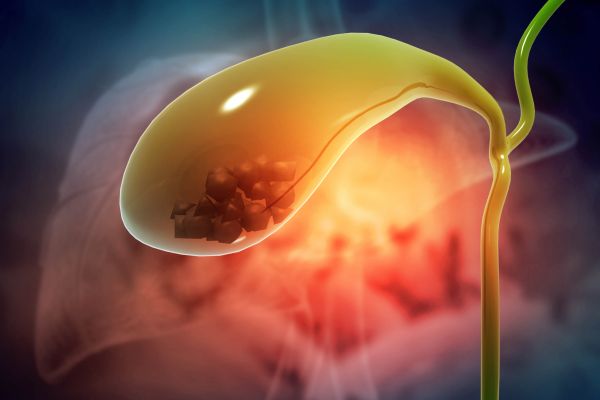Gallbladder cancer is a rare and aggressive disease that is often found incidentally because there are no screening tests for gallbladder cancer like there are for some other cancers, which makes it harder to find the disease at an early stage.
“The majority of people with early disease have no symptoms or will present with nonspecific symptoms like abdominal pain, nausea, vomiting or loss of appetite that resemble gallstone disease or cholecystitis,” said Sylvia Alarcon, MD, a former medical oncologist specializing in gastrointestinal cancers at Roswell Park Comprehensive Cancer Center. “Patients are often diagnosed incidentally with gallbladder cancer during or after surgery to remove the gallbladder due to gallstones.”
Am I at higher risk for gallbladder cancer?
Staying healthy, exercising and not smoking, in addition to adopting healthier habits, will only help so much in reducing the risk of developing gallbladder cancer. But it is a rare disease, happening more often in parts of the world outside North America (i.e., South America, northern India, Pakistan, Japan, etc.), and is more likely to affect women than men and white people compared with people of other ethnicities. The risk of developing gallbladder cancer also increases with age.
People who have chronic inflammation of the gallbladder (a condition known as cholecystitis), gallstones, polyps or other inflammation issues, might be at a higher risk for developing gallbladder cancer. It’s important for people with those conditions to talk with their primary care doctor about any unusual symptoms they might have, and not ignore changes, hoping the symptoms go away on their own, Dr. Alarcon says. “Don’t ignore it if you have unexpected weight loss, loss of appetite or pain you can’t explain and isn’t going away. All that needs to be evaluated.”
Why Roswell Park for gallbladder cancer?
Find out what makes Roswell Park unique in treating gallbladder cancer.
Surgery is the first step
Surgery is the only potentially curative treatment for gallbladder cancer. If the pathology confirms gallbladder cancer, the next step is to determine the stage of cancer. “Staging evaluation will determine the next steps in management. In patients with early-stage disease, it is important to determine if the tumor can be removed by surgery. If the tumor cannot be surgically removed, or is in a later stage, then palliative systemic therapy it is recommended to prolong life, which will mean reducing the tumor burden,” Dr. Alarcon says. “It is also recommended that patients, if they are eligible, participate in clinical trials. If patients are not able to tolerate systemic treatment, then the best supportive therapy would be indicated. It is also important to send tumor for molecular testing to evaluate for other treatment options including immunotherapy and targeted therapy.”
Dr. Alarcon says less than half of the people diagnosed with gallbladder cancer will have localized disease, meaning their cancer hasn’t spread to the lymph nodes, while 25% of patients will learn their cancer has spread to their lymph nodes and the remaining percentage will have distant metastasis. “At later stages, especially if the gallbladder cancer has spread, prognosis is poor,” she says.
Gallbladder cancer can spread quickly
Gallbladder cancer needs to be addressed and treated as soon as possible. If you have been diagnosed with gallbladder cancer, it’s important to start treatment right away in order to stop the spread of the disease.
“It’s also important for patients to ask their care team about the availability of clinical trials. That’s a very important option for patients,” Dr. Alarcon says. “We’re always trying to find new and better treatment options. If the person qualifies for any available clinical trials, then I recommend that they participate, as this could help to increase their treatment options. We always have active clinical trials and new ones open all the time. It’s a very active process and should be discussed in the initial visit or later during treatment if trials aren’t available right away.”



